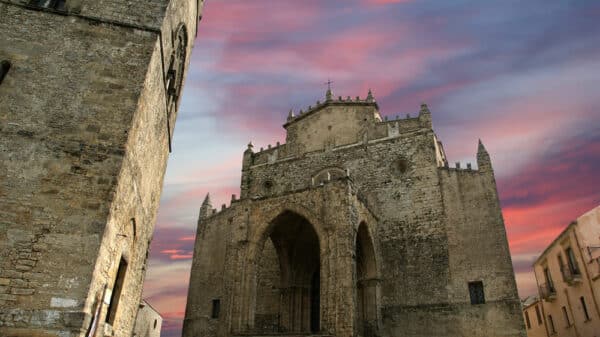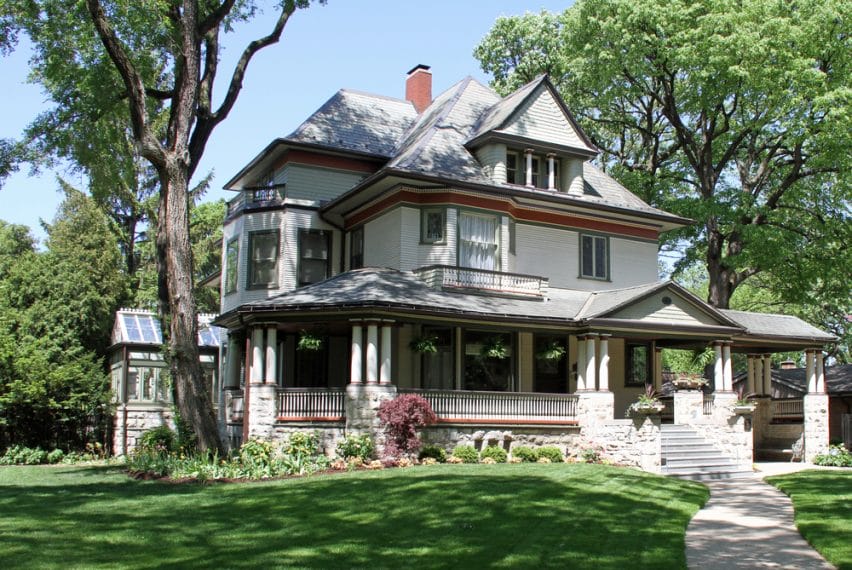Destroyed in 1811, the initial Palladian residence on an isle in the Ohio River is no longer there. There is now a replica in its place. Harman Blennerhasset, a lawyer and statesman, previously lived there and entertained many prominent guests, including Vice President Aaron Burr. Burr’s numerous visits and his establishment of a base for a mysterious military operation there resulted in him being accused of treason. The park is accessible by sternwheeler riverboat from Point Park on 2nd Street in Parkersburg, West Virginia.
South Carolina – Burt-Stark Mansion
Constructed in the 1830s, this two-story Greek Revival-style estate witnessed a crucial two-hour gathering in 1865. Jefferson Davis gathered the last members of the War Council here, where they displayed uniform disapproval of his proposal, effectively ending the Civil War. The mansion provides regular guided tours offering a peek into the Old South as it was a century ago.
Oklahoma – Pawnee Bill Ranch
This ranch was once the pride of renowned Wild West entertainer and performer Pawnee Bill. It became a popular attraction in Oklahoma and now functions as a museum, showcasing the couple’s envisioned home completed in 1910 and an array of family portraits, original artwork, and more.
Ohio – Westcott House
Frank Lloyd Wright designed this Prairie Style residence in Ohio for successful entrepreneur Burton J. Westcott and his family. Despite enduring tragedies that led it to fall into disrepair, the house has been fully restored and is now a museum offering both physical and virtual programming, along with a one-of-a-kind and imaginative gift store.
North Dakota – Chateau de Mores
The “chateau,” boasting 26 rooms, served as the summer abode for French nobleman and businessman Marquis de Mores in the 1800s. Situated southwest of Medora, the site commemorates his life and accomplishments, which spanned a range of business ventures. Today, the museum showcases various exhibits, from historical films to presidential artifacts, offering continuous insights into de Mores and his endeavors.
New York – Gracie Mansion
Erected in 1799, this two-story Federal-style domicile overlooking the East River in Manhattan’s Yorkville neighborhood has been the residence of the majority of New York City mayors since 1942. The property holds historical significance, as George Washington used a building on the premises during the Revolutionary War. The edifice is open for guided tours and features ongoing exhibitions displaying decorative and student art for public viewing.
New Mexico – Billy The Kid’s Hideout
This unassuming dwelling provided a secure sanctuary for outlaw fugitive Billy The Kid while evading capture. The 4,000-square-foot residence conceals a captivating episode from history, as the legendary gunslinger purportedly stashed his firearms beneath the floorboards during his hideout. The hideout is now adorned and welcomes visitors.
New Jersey – Albert Einstein’s House
This modest cottage served as the abode of the peculiar-haired theoretical physicist Albert Einstein from 1936 until his demise in 1955. Einstein explicitly requested that it not be turned into a museum. The house maintains a humble appearance.
The structure boasts two stories and an “L” shape, with a front-facing gabled roof, presenting an impressive facade. Albert Einstein’s dwelling has accommodated several distinguished intellectuals who have lectured at a nearby university, including Frank Wilczek and economist Eric Maskin. Designated as a National Historic Landmark in January 1976, the residence remains private but is viewable by passersby.
Edith Macefield’s House, also known as the “Up house,” rests in the heart of the Ballard district and gained attention when its owner declined a $1 million offer to sell her residence for commercial development in 2006. While the dwelling wasn’t the inspiration for the movie “Up,” it was utilized as a promotional tool when the film premiered. Following Edith’s passing, the house remains untouched, its balloons often replaced.
The C.M. Russell Log Cabin in Montana functioned as the living quarters and studio for Charles Marion Russell, the acclaimed “cowboy artist.” The authentic log cabin, constructed in 1903, houses genuine cowboy paraphernalia and Native American artifacts that Russell utilized in his artworks. It now forms part of a complex that includes a museum dedicated to his oeuvre.
The Missouri residence of Jesse James, the notorious outlaw, is accessible for tours. Nestled in St. Joseph, Missouri, the modest dwelling is where Jesse James resided with his spouse and where his criminal deeds came to an end. Visitors can peruse portraits of Jesse James, relics from his outlaw career, and even observe the clearly visible bullet hole in the wall.
The James J. Hill House in Minnesota, crafted in 1891 by railroad tycoon James J. Hill, stands as an immense 36,000-square-foot estate aptly named the “showcase of St. Paul.” Boasting its own art gallery, pipe organ, and gymnasium, the estate reigned as the largest and most costly dwelling in Minnesota upon completion.
Alden B. Dow Home & Studio in Michigan is an exceptional architectural marvel envisioned and constructed by Alden B. Dow, an imaginative luminary who collaborated with Frank Lloyd Wright. This residence seamlessly integrates with its environs and is lauded as one of America’s premier historic homes, welcoming public visitation.
The Paul Revere House, erected circa 1680, ranks as the oldest domicile downtown Boston and served as the dwelling of Paul Revere during his famed midnight ride in 1775. Visitors can delve into Revere’s life and trade, alongside general historical details linked to the Revolution.
The unpretentious brick row house in Maryland stood as the abode of literary luminary Edgar Allan Poe throughout the 1830s, a period during which he penned much of his literary works. Now serving as a museum, the house provides guided excursions, exhibitions, and even hosts a festival commemorating Poe’s legacy.
These renowned estates throughout the United States offer insights into the lives of notable figures and the distinctive architectural styles of their eras. The Louisiana Lalaurie Mansion was the domain of socialite and serial killer Delphine LeLaurie. Although a frequent stop on ghost tours, media sensationalization of the heinous acts within the premises has faced critique. The Kansas John Brown Cabin and Museum houses historical keepsakes from abolitionist John Brown’s life, including his writing desk and weaponry intended for emancipated individuals. Visitors to Vermont can lease the Naulakha dwelling where novelist Rudyard Kipling penned some of his renowned works. The John E. Christian House in Indiana exemplifies Frank Lloyd Wright’s Usonian style, replete with exceptionally vibrant decor. Designed by an Irish architect, the White House in Washington, D.C., has served as the abode of numerous American presidents. Hawaii’s Liljestrand House, envisioned by architect Vladimir Ossipoff, showcases an eco-friendly design and invites tours. Georgia’s stately Swan House features picturesque gardens and has featured in various film and television projects. Brigham Young erected the regal Lion House in Utah to accommodate his extensive brood.
Constructed in 1856, the Lion House is an opulent estate adorned with diverse antiquities from yesteryears. It takes its moniker from the stone lion statue positioned at its main entry. Guests can explore the interiors and learn about the historical narrative and the luminary linked to the denomination.
Connecticut – The Glass House
Designed by renowned architect Philip JohnsonIn the year 1949, emerged as an iconic glass-walled dwelling. It embodies a significant juncture in the progression of simple and contemporary architectural styles.
Rather than conventional barriers, Johnson envisaged utilizing the adjacent landscape as organic decor. The abode follows an unconventional layout and, while not catering to everyone’s residential tastes, it welcomes public tours.
Colorado – Sleeper House
Conceived by architect Charles Deaton in 1963, the Sleeper House stands as an exceptional elliptical abode renowned for its cameo in Woody Allen’s “Sleeper” film. Passing through multiple owners, it presently functions as a personal abode, inaccessible to the general public.
Despite its breathtaking vistas, the house remained unfinished and unoccupied for nearly three decades. It was eventually acquired and refurbished in 1999 since the initial architect faced financial constraints before completing the project.
Texas – Southfork Ranch
Famously known as the Ewing’s manor in the television series “Dallas,” Southfork Ranch originally served as a private estate but has since transformed into a venue for conferences and events. Guests can relish in ceremonies, celebrations, and a dedicated museum honoring the renowned show. The ranch affords an array of activities, including horseback riding.
The ranch prides itself on hosting gatherings of any dimension, from intimate gatherings to grand events, providing an unforgettable experience reminiscent of the show itself.
Arkansas – President Clinton’s Birthplace
Situated in Hope, Arkansas, the childhood residence of President William Jefferson Clinton is now a recognized national historic landmark. Guided tours offer insights into the early days of the former president, molding him into the individual he became.
The modest two-story dwelling, which shaped Bill’s initial four years, is supplemented by a visitor’s hub delivering supplementary insights and organizing gatherings and discussions.
Arizona – Taliesin West
Taliesin West, the winter retreat of Frank Lloyd Wright and the central hub for the School of Architecture under his moniker, stands tall on a sprawling 620-acre domain, which Wright acquired for a mere $3.50 per acre in 1937. It exhibits distinctive architectural nuances, attracting numerous visitors yearly.
Recognized for his Prairie Style of architecture, Wright fused unique components, such as shallow-sloped rooftops and open layouts, as an alternative to conventional, sealed-off blueprints of his era.
Oklahoma – Will Rogers Birthplace Ranch
Dubbed “The White House on the Verdigris,” the 1875 Oologah dwelling served as the birthplace of entertainer Will Rogers. Offering complimentary entry and educational prospects, it showcases the life of the artist and his legacy. The ranch features a classroom for group tours and video programming. Another notable property in Oklahoma is the privately-operated Prairie Chicken House, celebrated for its distinct architectural style.
New Mexico – Georgia O’Keeffe Home
Artist Georgia O’Keeffe’s adobe residence and studio in Abiquiu serve as a haven where she discovered inspiration for her artworks and embraced a simplistic lifestyle. Following her departure to Santa Fe, the dwelling came under the aegis of the Georgia O’Keeffe Museum, proffering various guided and self-guided tours encompassing art showcases and the artist’s biographical details. An exclusive chance to explore the ambiance that influenced O’Keeffe’s artistic endeavors.
The Biltmore Estate in North Carolina, classified as the grandest private estate ever erected in the United States. It belonged to George Vanderbilt and boasts a multitude of chambers, including 35 sleeping quarters, 43 bathrooms, a bowling alley, a 10,000-volume library, and 65 hearths. The abode also showcases upscale dining, events, and a hamlet for visitors to explore. In Taos Pueblo, New Mexico, stands a cluster of multi-tier adobe structures continuously inhabited for over a millennium.The governor of New Jersey can be found in Princeton. The term used for its name is taken from the Scots-Gaelic phrase for “wooded hill”. This residence was specifically constructed for the governor at that time, Charles S. Olden. Regular tours are offered at the manor, along with educational trips for schools focusing on sustainability. Similarly in New Jersey, Albert Einstein lived at 112 Mercer Street in Princeton for two decades. Presently, it is not open to the public as it serves as a private residence.
Grouseland, constructed in 1804, was the dwelling built for William Henry Harrison, the governor of Indiana who later became the ninth president of the United States. The exterior of the house was crafted using bricks, making it the initial brick building in Indiana. Inspiration for the design was drawn from Berkeley Plantation, the Harrison family’s residence in Virginia at the time. After many years of the Harrison family occupying it, the house eventually transformed into a museum accessible to the public. In Indiana, the Century of Progress Homes at Indiana Dunes National Lakeshore represent a set of buildings created with a modern architectural style for the Chicago World Fair in 1933.
The Moss Mansion, built in 1903, was the creation of the same architect responsible for the renowned Plaza Hotel in New York City. The stone mansion was erected for a wealthy businessman named Preston Boyd Moss, giving it its name. Notable films like “Son of the Morning Star” and “Return to Lonesome Dove” have featured this red-stone house. Regular visitors come to experience a journey back in time to this historical relic. Also in Montana, you can find Charles Marion Russell’s studio located in Great Falls, where Russell produced many of his famous paintings.
In 1882, the Vaile Mansion in Missouri was described by the Kansas City Times as “the most princely and comfortable home in the entire west.” This statement still holds true today. The mansion, known for its Second Empire architecture, has preserved much of its original grandeur. The Vaile Victorian Society is entrusted with maintaining the mansion’s Victorian decor. Likewise in Missouri, the Harry S. Truman House was the residence of the 33rd president of the United States from his marriage until his passing.
Out of Abraham and Mary Lincoln’s four sons, only Robert Todd Lincoln survived into adulthood. He constructed a magnificent Greek-revival home on a hilltop in Manchester. The family of Lincoln continuously lived in this home until 1975. The family’s will dictated that Hildene, upon ceasing to function as a private residence, should be transformed into a memorial site for the family. Presently, tours and lectures are conducted throughout the year, providing insights into the Lincoln family and agricultural practices. Similarly in Vermont, The Ethan Allen Homestead, built in 1787, is the delightful residence of Vermont’s founder.
Situated in Milwaukee, this residence was built by the celebrated beer connoisseur for his family in 1890. When plans arose to demolish the house and construct a parking lot in its place, public outcry in 1975 saved it. Today, the house remains intact and is utilized as a house museum. Alongside the regular tours offered, the Pabst mansion boasts a well-equipped gift shop, a unique feature not commonly found in historical houses. Also in Wisconsin, the Black Point Estate, the summer home of Conrad Seipp, stands as one of the finest examples of Queen Anne architecture in America.
Johnny Cash rose from humble beginnings, with his childhood home situated in the Dyess Colony, a shelter for 500 impoverished families. Through recent renovation efforts, the house now mirrors a typical 1930s home and has been listed on the National Register of Historic Places. Fans flock to witness this humble abode that offers small tours providing insights into Cash’s early life. Additionally in Arkansas, you can explore the architectural wonders built by Arkansas native E. Fay Jones in Heber Springs.
Designed by architect Frank Lloyd Wright, Fallingwater exemplifies his “organic” architectural style. Created as a weekend retreat for the affluent Kaufmann family, the house features a notable waterfall, adding to its renowned charm. The house stands as a prime representation of modern architecture and has.
This article delves into the exquisite historical residences across the United States, each with its unique architectural and historical significance. It offers glimpses into iconic houses in different states, featuring images and brief descriptions. For example, Standrod Mansion in Idaho, Graceland in Tennessee, The Breakers in Rhode Island, “A Christmas Story” House in Ohio, Nemours in Delaware, The Star-Spangled Flag House in Maryland, Oheka Castle in New York, and Mark Twain House in Connecticut. Each of these houses boasts a rich history, distinct architecture, and cultural importance.
The Mark Twain House and Museum, originally constructed in 1874, served as the dwelling for the famed author during the creation of “The Adventures of Tom Sawyer.” Its elegant Gothic Revival style remains intact.
The House of the Seven Gables in Massachusetts, built in 1668, holds significance as the site where Nathaniel Hawthorne penned some of his renowned works. This iconic black-and-red structure remains a poignant reminder of history. The Henry Ford Estate in Michigan, a 56-room mansion, was the cherished abode of Henry Ford and his wife from 1915 to 1950.
In Arizona, the Wrigley Mansion, constructed in 1929 in a Spanish colonial-style, now operates as a museum and event venue. Glensheen in Minnesota, a mansion with 39 rooms, has been donated to the University of Minnesota and converted into a house museum. The Ernest Hemingway’s Home in Florida showcases Spanish Colonial-style architecture and is a sanctuary for approximately 40 to 50 polydactyl cats.
Tidalholm, known as “The Big Chill,” was erected in 1853 and serves as the primary setting for the ’80s classic movie. Though privately owned, it does not offer tours. These historic residences carry unique narratives and architectural significance in their respective states.
Today, tours of the house allow visitors to view family heirlooms donated by the Whitfield family. In Alabama, the Hank Williams Boyhood Home in Georgiana, Alabama stands as the place where Hank Williams honed his musical talents before becoming a legendary figure in the history of country music.
Texas – Bishop’s Palace
The Bishop’s Palace, constructed for attorney Walter Gresham, is Galveston’s most prominent building. Esteemed architect Nicholas Clayton melded practicality with beauty in this home. Surviving the Great Hurricane of 1900, the house features silver-lined appliances for aesthetic value.
Its sturdy stone exterior allowed it to shelter hundreds of survivors during the catastrophic hurricane in 1900. Acquired by the Roman Catholic Diocese of Galveston in 1923, it became the residence of the Bishop, hence its name. In Texas, the Huntsville home was inhabited by Sam Houston, the inaugural elected president of the Republic of Texas.
Alaska – The Russian Bishop’s House
Russia’s historical imprint in Alaska is preserved through a few remnants of Russian architecture. One such relic is the Russian Bishop’s house, finalized in 1842 at Sitka National Historical Park. This center acts as a cultural and informational hub for Russian development, showcasing a unique construction style typical of Russian architecture.Bishop in Alaska serving as part of the Russian Orthodox Folks’ endeavor to extend their mission into America. Likewise in Alaska: The Oscar Anderson House stands as one of the earliest residences in Anchorage, Alaska, showcasing the valuable contributions made by Oscar Anderson to the initial growth of Anchorage.
Kansas – Birthplace of Amelia Earhart
The house in Kansas where the renowned pilot Amelia Earhart was born can be found. The majority of her life was spent in this Gothic-style domicile. Today, it has been repurposed into a historical house museum dedicated to celebrating Earhart’s life. The museum, formerly her residence, offers a window into her childhood life and serves as a tribute to the famed aviator.
The Ninety-Nines, an International Organization of Female Aviators, impeccably restored the house to its original state and transformed it into a historical house museum open to the public. Additionally in Kansas: Another notable abode is President Eisenhower’s childhood home, now converted into a museum for the Eisenhower Presidential Center.
Mississippi – Longwood Plantation
Longwood Plantation is renowned for being home to the largest octagonal-shaped residence in the United States. Historians playfully refer to this domicile as “Nutt’s Folly” because it was the dream residence of Haller Nutt, a nobleman who, unfortunately, passed away from pneumonia before the completion of the house. However, the remainder of his family resided in the finished basement.
It also features a beautiful Byzantine onion-style dome atop it, adorned with intricate decorations. Considering its construction in 1864, the house still stands grandly today. Also in Mississippi: The two-room house where Elvis Presley was born and spent his early years is part of the Mississippi Blues Trail.
California – Postcard Row
Postcard Row, one of the most captured homes in the nation, can be found in San Francisco. Constructed between 1892 and 1896, these seven residences were the brainchild of a single individual. Famously known as the “seven sisters,” these homes might ring a bell, as they were prominently featured in the popular TV show “Full House.” Unfortunately, these private residences are not open to the public.
These houses serve as a symbol of the California gold rush, reflecting the rapid wealth accumulation and the desire to showcase newfound affluence. Moreover in California: The Winchester Mystery House situated in San Jose is a stunning Victorian estate formerly owned by Sarah Winchester, famous for its unique and captivating architecture.
Georgia – The Mercer-Williams House
Originally intended for the grandfather of the musician Johnny Mercer, this dwelling was later purchased and restored by the antique expert Jim Williams. By 1994, it had become a popular tourist attraction in Savannah, Georgia, following the immense success of the movie adaptation of the book “Midnight in the Garden of Good & Evil.”
The house remains in the possession of the family and today stands as a historical house museum featuring the iconic red-brick structure. Furthermore in Georgia: Situated in Covington, Georgia is The Twelve Oaks Bed & Breakfast, believed to have inspired Margaret Mitchell’s fictional Twelve Oaks in the film Gone With the Wind.
Image Source: Thomas Barrat / Shutterstock



































